
Home
Lost Reg Code?
News
Online KiwiSDRs
macOS Software
Windows Software
Ham Radio iPhone/iPad
Linux Software
Support/FAQ
Update Policy
USB Icom CI-V Interface
Radio Hobbyist Products
22m Programmable Beacon Kit
CW Keyer For Beacons Kit
Jellyfish Transformer
Cyclops Antenna Transformer
General Interest Programs
Atomic Mac/PC
Audiocorder
Audio Toolbox
Black Cat Timer
Diet Sleuth
iUnit
Graffikon
Graph Paper Maker
Health Tracker
Image Resizer
Knitting Wizard
Label Wizard
Prog Audio Gen
Sound Byte
Synth 76477
Amateur Radio Programs
AirSpyHF+ Server
Audiocorder
Black Cat Absolute ACARS
Black Cat ACARS
Black Cat ALE
Black Cat ALE Vacuum Cleaner
Black Cat NetFinder
Black Cat GMDSS
Black Cat HF Fax
Black Cat SSTV
Black Cat NAVTEX SITOR-B
Carrier Sleuth
Cocoa 1090
Cocoa RTL Server
DGPS Decoding
DX Toolbox
Elmer
MatchMaker
KiwiKonnect
KiwiSDR Monitor
KiwiSDR Sound Client
MININEC Pro
Morse Mania
MultiMode
sdrRewind
RF Toolbox
SDRuno Plugin
SDRuno Equalizer Plugin
SelCall
Sonde
iPhone/iPad Apps
ALE
Atoms To Go
dB Calc
Clik Trak
DGPS Decoder
Drill Calc
DX Toolbox
Elmer Extra
Elmer General
Elmer Tech
Feld Hellschreiber
Field Strength Calc
Function Generator Pad
GMDSS
Godafoss
HF Weather Fax
iAttenuate
iFunctionGenerator
iSoundex
iSoundByte
iSweep
iUnit
Morse Mania
ACARS Pad
Morse Pad
NAVTEX Pad
Packet Pad
PSK31 Pad
SSTV Pad
Photon Calc
Rad Map Tracker
RF Link Calc
SelCall Tone Gen
Sound Byte
Sound Byte Control
Spectrum Pad
SWBC Schedules
Synth 76477
Synth Motion
Transmission Line Calc
Weather Calc
Wire Calc
iPhone/iPad Bundles
RF Calculator Apps
Ham Radio Decoder Apps
Audio Utility Apps
Shortwave Weather Apps
Ham Radio Exam Study Apps
Shortwave Decoder Apps
About Black Cat Systems
Site Map
Our software for Mac OSX
Privacy Policy
Press/Media
HFunderground
Apple /// Emulator
Macintosh Links
Shortwave Radio
Pirate Radio
Spy Numbers Stations
Science and Electronics
Ham Radio Software
Everything You Ever Wanted To Know About the JRC NRD 545
(But Were Afraid To Ask)
There is no apparent change in filtering in AM, AMS, FM, or FMW modes.
USB Mode:
4.50 kHz Loose:
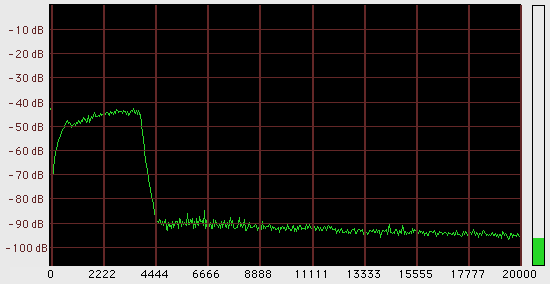
4.50 kHz Sharp:
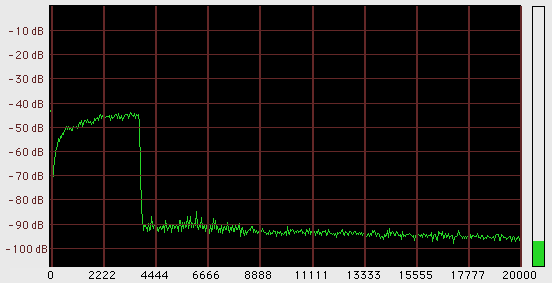
2.70 kHz Loose:
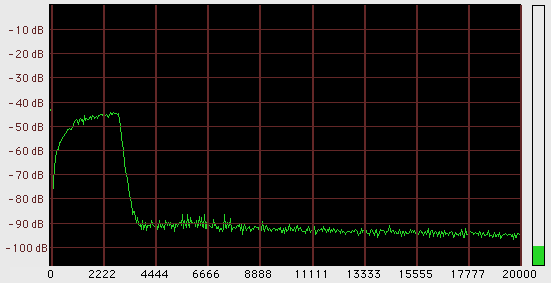
2.70 kHz Sharp:
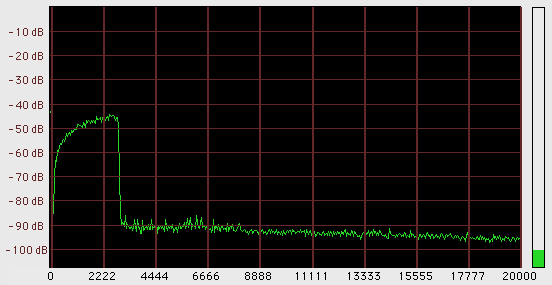
1.80 kHz Loose:
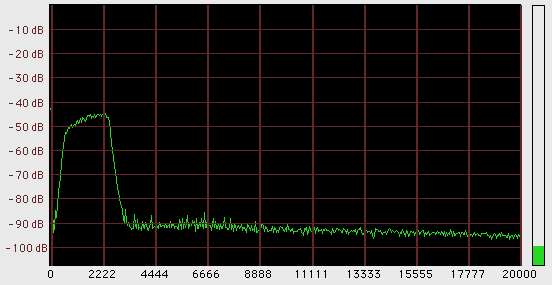
1.80 kHz Sharp:
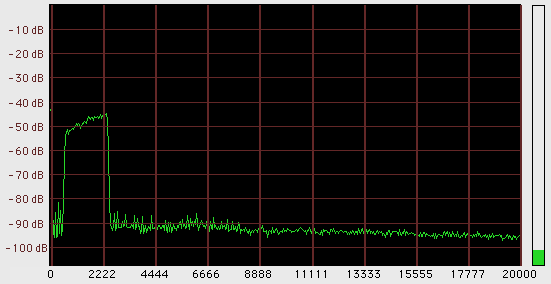
RTTY Mode:
1.00 kHz Loose:
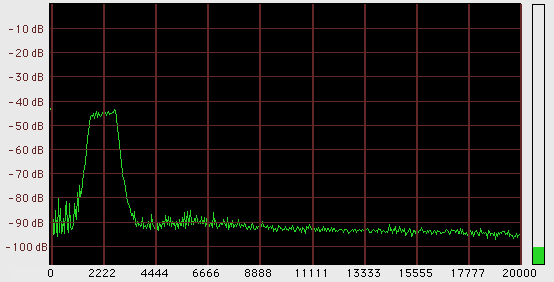
1.00 kHz Sharp:
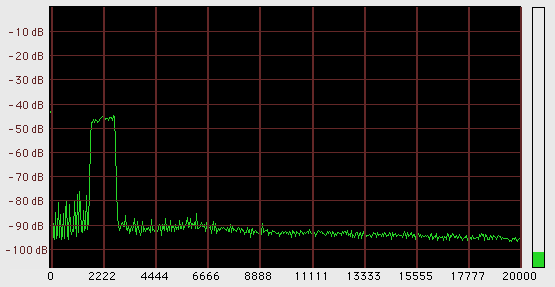
But what does it sound like? Here are two tests, one with a bandwidth of 1.80 kHz, the other with a 2.70 kHz bandwidth, both in USB mode. Each test starts in with the loose setting, then changes to the sharp setting about half way through. I am sure you can tell when the change takes place.
My observations: For the 1.80 kHz test, the audio sounds much worse with the sharp setting. For the 2.70 kHz test, they sound very close to the same, perhaps even slightly better in the sharp setting. But one thing that makes it difficult to tell is that for the 2.70 kHz case, the volume is much louder with the sharp setting. There is no apparent volume change in the 1.80 kHz case.
I do not believe there is "one correct setting" for loose vs sharp. It all depends on what you are trying to listen to, and the conditions. One of the advantages of the 545 over most other radios is the fact that you can change so many settings, and you have a lot of control over filter characteristics. Remember that most non DSP radios give you two or three IF filers to choose from, that's it! Don't be afraid to play around with the settings, and see what works best for you, for certain stations, under certain conditions.
